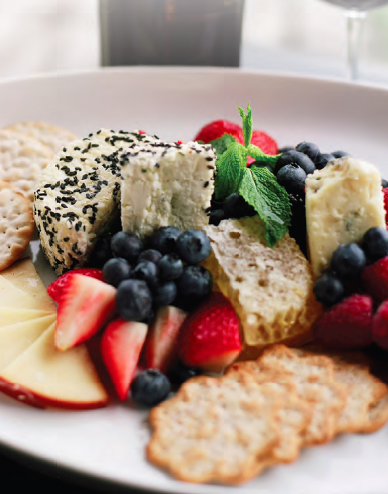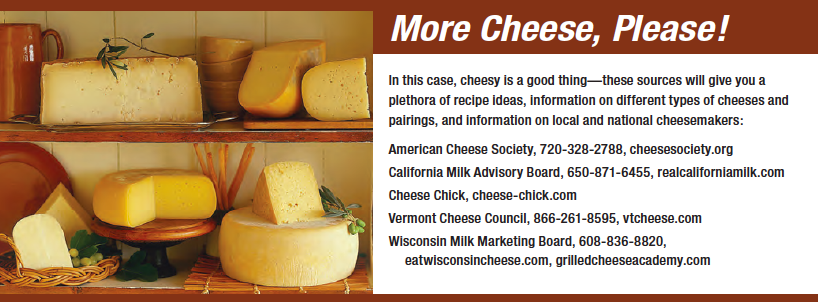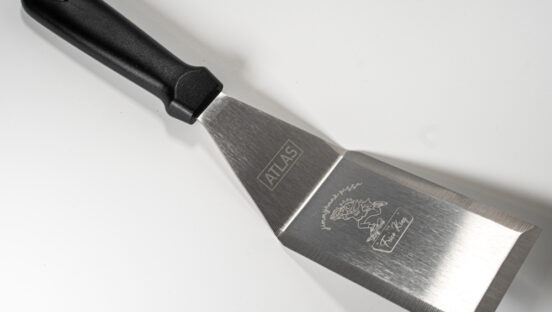 We all know that a plethora of cheeses can be used on pizzas, from Gorgonzola-and-pear pies to a classic cheese slice with whole-milk mozzarella. However, how are you using one of your pizzeria’s main ingredients in other parts of the menu? Cheeses can be effectively incorporated in virtually every dish, from desserts (think a ricotta cheesecake or mascarpone-layered tiramisu) to appetizers to salads to sandwiches. Chances are, you already use cheese in the obvious ways, but we spoke to experts in the cheese industry to further determine how you can go about using cheeses to diversify your offerings and set yourself apart from the competition.
We all know that a plethora of cheeses can be used on pizzas, from Gorgonzola-and-pear pies to a classic cheese slice with whole-milk mozzarella. However, how are you using one of your pizzeria’s main ingredients in other parts of the menu? Cheeses can be effectively incorporated in virtually every dish, from desserts (think a ricotta cheesecake or mascarpone-layered tiramisu) to appetizers to salads to sandwiches. Chances are, you already use cheese in the obvious ways, but we spoke to experts in the cheese industry to further determine how you can go about using cheeses to diversify your offerings and set yourself apart from the competition.
Va-Va-Versatile
Salads are a great platform for cheeses, which add richness and depth of flavor that can complement the crisp greens or pasta shapes that form the basis of the dish. “Generally, people want to begin a meal with a salad or use them as a side dish, and cheese is a very versatile topping for salad,” says Christine Hyatt, the Scottsdale, Arizona-based vice president of the American Cheese Society and owner of Cheese Chick. “You want to choose a cheese that will meld with the flavors in the salad but also stand out enough to taste it.” She recommends that stronger flavor cheeses, such as blue, feta or Gorgonzola, are ideal in salads, while fresh goat cheese goes well with vegetable salads or tomato-and-cucumber blends.
“There is no limit to how cheese can be applied for salads; because these are generally served cold, a Monterey Jack cheese is a great addition, since it has an open texture and will absorb the dressing or marinade,” notes Mike Levy, foodservice consultant for the California Milk Advisory Board, based in San Francisco. “Blue cheese plays well off either a tart (such as balsamic dressing) or sweet (raspberry vinaigrette) flavor, while a Caprese salad is so easy and so popular—just tomatoes, fresh mozzarella or bocconcini, oil and balsamic, and salt and pepper—voila!” Obviously, whether you use cheese as a main ingredient in the salad (such as the Caprese) or merely as an add-on, you can find a cheese to suit any flavor or texture profile.
 Appetizers often incorporate cheese, as many pizzeria owners can attest to. You may already offer the basic fried mozzarella, for example, but you can take your cheese-based appetizers in a lot of new directions so that you’re not simply offering the same starters as the pizzeria around the corner. “The possibilities are endless for appetizers that incorporate cheese,” explains Marilyn Wilkinson, director of national product communications for the Wisconsin Milk Marketing Board in Madison, Wisconsin. “Here are a few ideas: cheese-topped crostini, cheese-stuffed olives or figs, cheese curds in marinara sauce, spinach or artichoke dips and spreads, arancine (rice balls), polenta bites, or cheesy breadsticks.”
Appetizers often incorporate cheese, as many pizzeria owners can attest to. You may already offer the basic fried mozzarella, for example, but you can take your cheese-based appetizers in a lot of new directions so that you’re not simply offering the same starters as the pizzeria around the corner. “The possibilities are endless for appetizers that incorporate cheese,” explains Marilyn Wilkinson, director of national product communications for the Wisconsin Milk Marketing Board in Madison, Wisconsin. “Here are a few ideas: cheese-topped crostini, cheese-stuffed olives or figs, cheese curds in marinara sauce, spinach or artichoke dips and spreads, arancine (rice balls), polenta bites, or cheesy breadsticks.”
Cheese plates in particular are great to offer in a sit-down environment because they can be offered as either an appetizer or a dessert. “Cheese plates are great to add a more upscale image to the restaurant, and they encourage people to drink wine or beer as a pairing,” notes Hyatt. “Pick out two to five styles of cheese that use different types of milk (goat, cow, sheep, etc.) and incorporate different flavors, textures and aromas.” When building your cheese plate, suggests Levy, cheeses should be compiled in a thoughtful way, with ranges from hard to soft and mild to strong; honey, sauce or jam can be served as an accompaniment.
One pizzeria owner has even found success by allowing customers to build their own cheese plates. “My restaurant, Pizza Volante (pizzavolantemiami.com), features a mozzarella bar and serves various types of mozzarella with classic accompaniments,” says owner and chef Jonathan Eismann. “This allows guests to choose their own plate; they’re able to choose from fresh buffalo mozzarella, burrata or one of our locally made cowmilk varieties. Having a fresh cheese bar like our mozzarella bar is a great way to display a variety of cheeses in an attractive and interactive setting.”
Many think that sandwiches are not complete without a few slices of cheese included. “Most of our signature sandwiches (such as the New Yorker—a chicken cutlet with bacon, melted American and Russian dressing) have cheese melted over them,” says Robert Priskie, owner of Pakula’s Pizza (i8at.com/11786) in New City, New York. Priskie reports that he keeps 10 different cheeses on hand for menu items ranging from salads to sandwiches: cheddar, shredded mozzarella, Swiss, provolone, yellow American, feta, fresh mozzarella in water, dried fresh mozzarella, Romano and Parmesan.
Sandwiches offer the opportunity for you to put your cheeses on display and get creative, though the classics are perennially popular (what kid—or adult, for that matter—would refuse an old-fashioned grilled cheese sandwich?). “Patrons never seem to get enough of grilled cheese, and you can find some really creative usages,” says Wilkinson. “You can offer ethnic options such as tortas, pitas or calzones with cheese-flecked crusts; vegetarian sandwiches; traditional sandwiches with a ‘new’ cheese (instead of ham with Swiss, try ham with aged provolone, for example); or open-faced sandwiches so that the melted cheese is in plain view.” Sandwiches have been enjoying a resurgence as consumers look to them as a fast, tasty and filling option for their busy, financially strapped lives.
Desserts are also an area in which you can take advantage of the richness and flavor of cheese. “Sweet desserts can utilize mascarpone, a smooth Italian cream cheese—try it spread on pound cake or phyllo dough and topped with fresh berries; or in cheesecake instead of cream cheese,” suggests Hyatt. “You can also use crème fraîche to add richness and flavor to desserts.” As mentioned above, cheese plates can also work double-duty as desserts, as many customers prefer a savory, not sweet, end to the meal, and cheese plates tend to seem like less of an indulgence than cakes or other rich desserts. Meanwhile, Wilkinson suggests using cheeses in pastry dough and pies, tart crusts, fruit-and-cheese kabobs, streusel-like nut/cheese toppings for fruit crisps, tiramisu, trifle-like layered desserts, and puddings.

Super Sales
Cheese selection is largely based on personal preferences, and most people want to make sure they like a cheese before they order it. If you’re experimenting with something new, how do you get patrons to try—and buy? “I love when a restaurant offers a complimentary appetizer before the meal—a ‘compliments of the chef’ item that restaurants do as a trial,” says Levy. “Pizzerias should try this as a way of introducing new menu options or cheeses, to gauge customer reaction. Maybe they can even tie it into an online vote, where customers can choose their favorite cheeses to add to the menu.”
Wilkinson agrees that tasting often spurs customers to try something new. “In a word, promote,” she advises. “Use table tents or signage; give samples or coupons for the next visit; offer at a special price or as a menu feature; give a brief description on the menu. Our research shows that consumers want to try new cheeses—but they don’t want to buy them unless they know what they taste like or what they’re similar to.”
Hyatt finds that server education is paramount when adding new cheeses to the menu; only through them will the customer will be able to find out more about the cheese and become excited about it. “Educate staff on what to pair with cheeses, get them excited about new cheeses, have a cheese tasting with the staff (sometimes, distributors are willing to bring in their cheeses for a tasting, so you can involve staff at that point).” If staff talks up a new menu item or cheese to customers, you will probably find that sales increase.












